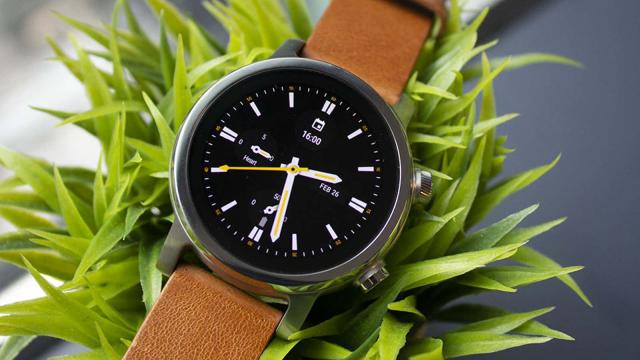After Google and Samsung announced they were partnering to build a new Wear OS, the biggest unanswered question was whether existing smartwatches would be able to upgrade to the platform. Today, Google clarified which smartwatches would be eligible in a Wear OS support forum — and if you’ve got an older Android watch running on Qualcomm’s Snapdragon Wear 3100 chip, you might want to start thinking about your options.
But first, the post also reveals that the unified platform will officially be called Wear OS 3 — a godsend to tech journalists who’ve run out of ways to write “new Wear OS.” Samsung and Fossil have said their upcoming watches will run Wear OS 3, but upgrades for other eligible devices won’t arrive until mid-2022 at the earliest.
“User experience is a top priority for us and we are excited about the interest we’ve received on Wear OS 3, the new unified platform,” Google wrote. “For the previous generation of Wear OS smartwatches, a system update to Wear OS 3 will bring the benefit of many of the new experiences, and in some limited cases, the user experience will be impacted.”
That previous generation of watches eligible to upgrade to Wear OS 3 includes Mobvoi’s GPS and LTE TicWatch Pro 3, the TicWatch E3, future TicWatch devices, as well as the next generation of Fossil smartwatches. All of these are, or will be, 4100-powered smartwatches. That doesn’t bode well for Snapdragon Wear 3100 smartwatches, especially since Fossil has confirmed its existing 3100 smartwatches will not be upgraded.
Upgrading to Wear OS 3 will require eligible smartwatch owners to reset their devices to factory settings. The company said it’ll provide further details before the update.
The company also emphasised that the current version of Wear OS isn’t going anywhere, as it anticipates many Wear OS smartwatch owners may not be eligible to upgrade or want to upgrade right away. Google also said it’s committed to bringing “new app experiences” to Wear OS, pointing to recent updates to the Play Store and Gboard. More updates like those are purportedly on the way. Crucially, it finally clarified that current Wear OS smartwatches will receive security updates for a minimum of two years from the device’s launch.
It was clear that the transition from Wear OS to Wear OS 3 was going to be a journey. As I’ve written many times before, there is simply no easy way to completely overhaul or update any platform. (See: Sonos’ handling of its legacy products.) In the case of Wear OS, an open ecosystem led to a fragmented space that couldn’t really thrive because of Qualcomm’s outdated and outclassed Snapdragon Wear chipsets. This also isn’t something that just started in 2021. Google’s renewed push into wearables arguably began in early 2019, when it bought $US40 ($54) million worth of Fossil tech.
Today’s announcement, and recent news that Qualcomm is planning to release a new Snapdragon Wear platform in the next year, hint that once again it’s going to boil down to hardware and patience. By noting that some user experiences may be impacted, it’s likely that even the 4100 platform may not be suited for everything Wear OS 3 is bringing.
This bears out if you examine the 4100’s specs. In the year 2021, when companies are gearing up to jump from 5nm to 3nm process tech for their smartwatch chips, the 4100 still depends on ancient 12nm process tech. It’s a significant improvement from the 28nm 3100, but it’s been over five years since 14nm and 12 nm chips were considered “new.” Unfortunately, Google doesn’t control what hardware is available for Android smartwatches. That’s on Qualcomm.
So is Wear OS 3 doomed from the get-go? No. A potentially bumpy transition is a bad reason to prematurely write off Wear OS 3. Growing pains are inevitable, but it’s actually a good sign we’re finding out about eligibility almost a year in advance. Now we know what to expect, there seems to be a genuine commitment to long-term improvement, and consumers have time to see what will work best for them.
There’s another crucial difference this time around: Samsung. For its next-gen Galaxy Watches, Samsung has reportedly developed an Exynos chip that’s exponentially more powerful than any Snapdragon chipset Qualcomm’s ever made. This is a big reason why Samsung’s smartwatches will probably be a more accurate gauge of Wear OS 3’s potential than 4100-powered smartwatches. We’ll have to see what comes out of Qualcomm’s overdue efforts to make a chip that isn’t trash.
For consumers, this means you’ve got to scrutinize the processor powering your next Android smartwatch. Do not, I repeat, do not buy a new Snapdragon Wear 3100 smartwatch — even if the discounts are tempting. If you’ve already got a 3100-powered watch, you have a couple of options.
The easiest is to hold onto your watch, stay on the current Wear OS, and scope out new options as they become available. Or, if you need to upgrade sooner, opt for one of Samsung’s next-gen smartwatches or a reasonably priced 4100-powered smartwatch. In any case, you don’t have to make this decision now. A reminder: Upgrades won’t be available for existing watches until mid-2022 or later. You’ve got plenty of time to mull it over.
